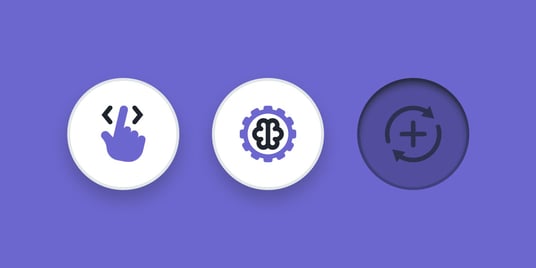Get a Free Trial
Creating, executing, and maintaining reliable tests has never been easier.
Gartner recently announced the 18 skills building the future of application development, ranking them in terms of high priority, significant, and moderate importance. Top of the list: AI and machine learning, DevOps and agile practices, as well as the user experience. None of these skills are out of the norm to those in the software industry, but Gartner analyst Jim Scheibmeir noted that continuous learning is essential to helping software teams gain these skills.
It’s no surprise then, that low-code was also featured as a moderately important skill. As application development leaders evaluate their teams and the skills needed to ensure a high quality product that can be updated at the speed DevOps, they need plans to routinely re-skill and upskill their entire workforce, including those without full coding skills.
Bringing Learning to the Workplace
Jim noted that since plenty of free resources exist for learning AI, DevOps, and customer experience-related skills, the real challenge is allocating enough time for workers to expand their knowledge on the job. Low-code tools address this challenge by introducing an approachable way for a wide range of employees to make the most of AI and machine learning, DevOps tools, and support the customer experience.
AI and machine learning
Given that Gartner also predicts that half of software development projects will include AI by 2024, development leaders need to start implementing strategies that make AI and machine learning accessible to the entire DevOps pipeline. Otherwise, any progress made towards integrating development, quality, and operations teams will be lost to new silos created by technologies that can only be used by those with advanced skills.
Low-code creates a roadmap for AI-powered software development by enabling all team members, regardless of coding experience, to use advanced tools. The most common application is automating routine tasks, such as software testing, so that workers can focus on higher value tasks. Legacy test automation tools, for example, typically require significant maintenance to ensure that tests are updated and can provide accurate results.
AI and machine learning allow newer test automation solutions to understand how different elements interact with each other, then auto-heal tests accordingly as the product evolves. Testers can then focus on expanding and improving their quality strategy, expand coverage, and focus on testing edge cases like new product features without sacrificing test coverage or product quality.
DevOps tools
DevOps tools have typically been geared towards developers and engineers, making the build process easier and more efficient but limiting their benefits to the subset of the DevOps pipeline that can code. To achieve the full benefits of DevOps, teams need solutions that build a shared foundation for managing code as it navigates through the entire development pipeline.
Low-code provides this foundation by balancing the power and adaptability of code-heavy tools with the approachability of intuitive user interfaces. For example, coding team members don’t need to sacrifice functionality, while non-coding team members like manual testers and customer success managers can immediately start using the low-code test automation solutions. Shared tools, workspaces, and connected workflows enable true DevOps for the entire SDLC, rather than making the workflows of one team easier.
The customer experience
Brand utility - how useful your product is - has replaced brand loyalty. Every industry, including traditionally sticky fields like healthcare and banking, competes on the customer experience. To compete, software development organizations need to break free of the traditional siloed model of customer experience planning where primarily designers and software testers manage the CX. Instead, the customer perspective needs to be integrated into the entire SDLC from conceptualization to ongoing updates.
Once again, low-code platforms provide a valuable common knowledge base and unified workflow between teams of varying code expertise. Everyone is able to contribute and share their perspectives across the development pipeline, broadening the diversity of views that can participate in software development. This not only ensures that the team building the software more closely resembles the end user, but that a product is tested and reviewed more thoroughly before it reaches a public audience.
Furthermore, effective low-code platforms have built-in knowledge sharing that improves cross-functional collaboration and keeps all information generated throughout the development pipeline centralized in one place. In the case of software testing and quality engineering, this means that information surrounding software defects is easily shared between developers and testers, making it easier to quickly address bugs.
The Future is Continuous Learning
AI, DevOps, and the customer experience will continue to evolve, even as they become pillars of application development. Employees and business leaders alike need long-term tools and strategies to support continuous learning and reskilling/upskilling while not sacrificing too much productive time. As low-code tools become more advanced, more powerful, and more functional, they’re growing into a multipurpose role that helps the entire organization expand their skills and collaborate more effectively while also enabling faster software development.
To see low-code learning in action, register for mabl's 2 week free trial today.






